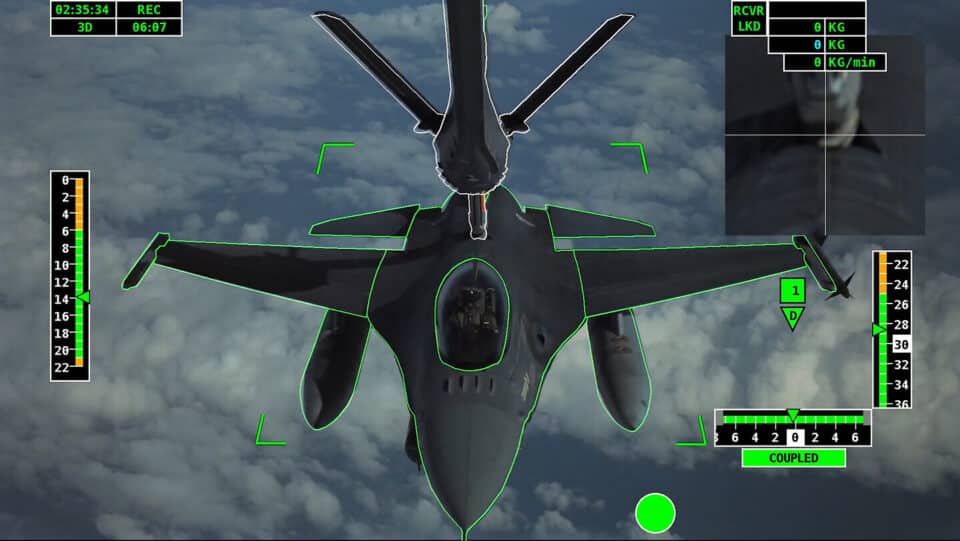Aviation
The world’s first automatic refuelling Airbus A330 MRTT has been certified.
the Airbus A330 MRTT has become the first tanker in the world to be authorised for autonomous air-to-air refuelling (A3R) boom operations in daylight (RSAF).@AirbusDefence #SmartMRTT #A3R #UpNext #FIA2022

Following a successful campaign in conjunction with the Republic of Singapore Air Force, the Airbus A330 MRTT has become the first tanker in the world to be authorised for autonomous air-to-air refuelling (A3R) boom operations in daylight (RSAF).
This capability is a component of the new SMART MRTT created by Airbus and certified by the Spanish National Institute for Aerospace Technology (INTA). The aim of the A3R system is to optimise the pace of air-to-air refuelling (AAR) transfer in operational situations to enable air superiority while reducing the burden of the air refuelling operator (ARO), improving safety, and requiring no new equipment on the receiving aircraft.
“The world’s first automated contact with a boom system in a joint operation with the Royal Australian Air Force in 2018 marked the beginning of a successful journey that culminated in the certification of the A3R capability” (RAAF). Since then, with the help of our customers, particularly with the crucial involvement of our partner the RSAF, a launch customer and the first operator to take advantage of this paradigm-shifting capability, we’ve accomplished more aeronautical “world firsts.” With improved air refuelling capabilities, the A330 MRTT maintains its technological edge, according to Jean-Brice Dumont, Head of Military Air Systems at Airbus Defence and Space.
An RSAF A330 MRTT participated in the development, flight test campaign, and certification of the A3R as part of the collaboration between Airbus and the RSAF for the development of the SMART MRTT. Furthermore, improved maintenance capabilities have been created, enabling quicker completion of ground operations while giving a way to make the best possible use of spare components.
The A330 MRTT will continue to develop in this direction. Auto’Mate, a demonstration that will develop, adapt, mature, integrate, and assess technologies enabling autonomous assets air-to-air refuelling (A4R) and autonomous formation flight (AF2) operations, has been established by Airbus through its subsidiary Airbus UpNext. The primary goal of Auto’Mate will be to automate the reception aircraft’s operations, which calls for a number of novel technologies that serve as the foundation of the UpNext Auto’Mate demonstrator.
In both scenarios, an A310 will serve as the Tanker Refuelling Flight Test Bed and DT-25 Target Drones will serve as the receiving aircraft. These technological building blocks will be evaluated in flight during 2023 with a final end-to-end demonstration mid-2024. Reduce crew fatigue and training expenses, increase safety and efficiency, and pioneer unmanned air-to-air refuelling operations (including unmanned-to-unmanned AAR operations), a highly desired capability for future defence scenarios. These are just a few of the benefits of the technologies developed in the Airbus Auto’Mate demonstrator. The first UpNext demonstrator to be introduced, created, and finished in Spain is Auto’Mate.

Aviation
Boeing, Antonov to Collaborate on Defense Projects

– MOU represents Boeing’s commitment to work with Ukrainian industry
– Includes exploring opportunities for collaborating on in-country support of Unmanned Aerial Systems
A Memorandum of Understanding was signed today by Boeing and Antonov Company to investigate potential collaboration on defense-related projects.
“We’re happy to keep collaborating with the Antonov Company to help Ukraine’s economic development and expansion,” stated Ted Colbert, CEO and president of Boeing Defence, Space, & Security.
Airbus and the Antonov An-225: The Best Partnership:Click here
“This agreement demonstrates our ongoing efforts to find more opportunities to work with Ukrainian industry, which was underscored by our signing of the Ukrainian Defence Industry Compact earlier this year.”
The areas of potential collaboration identified in the agreement consist of training, logistical support and overhaul services for tactical Unmanned Aerial Systems utilized by the Ukrainian Armed Forces, which includes the ScanEagle. In addition, the companies will also explore opportunities for Antonov to provide engineering support to Boeing.
The six largest cargo aircraft ever built in the aviation industry:Click here
“A strong, innovative, and efficient defense industry is key to sustainable economic development and national security, and we are extremely excited to collaborate with Boeing,” said Ievhen Gavrylov, CEO of Antonov Company.
This agreement brings a whole new level of opportunity to implement the latest and most effective solutions – in addition to the possibility of future projects with Boeing in the aerospace and defense industry.”
-

 Travel1 week ago
Travel1 week agoAir India to Expand US Operations with Three New Routes After a Decade
-

 Travel2 weeks ago
Travel2 weeks agoWhy We Should Avoid These Stamps in a Passport
-

 Airlines1 month ago
Airlines1 month agoInvestigations Reveal Fake Chinese Titanium in Boeing and Airbus Jets
-

 Tech4 weeks ago
Tech4 weeks agoChina’s CATL Plans 1,800-Mile Electric Plane Launch by 2027
-

 Airport3 days ago
Airport3 days agoTop 10 Largest Airports in the World by Size
-

 Aerospace4 weeks ago
Aerospace4 weeks agoChina’s Fighter Jets Turn Wings into Autonomous Drones
-

 Airlines4 days ago
Airlines4 days agoAir India Rolls Out A350s for Delhi-New York JFK and Newark Routes
-

 Defence3 weeks ago
Defence3 weeks agoBoeing Enhances Chinook with New Engines and Block II Upgrades at $96 Million







